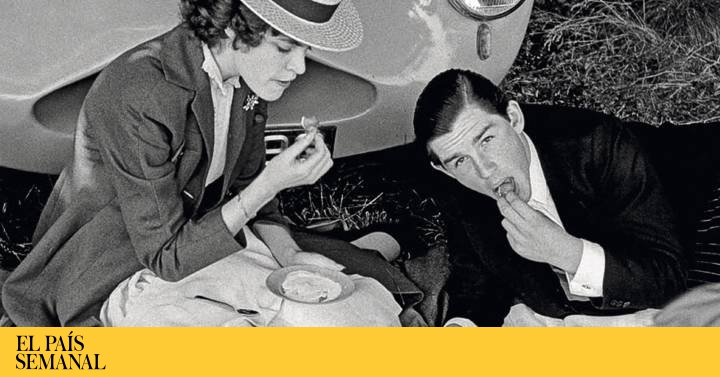MONEY IS NOT good for anything but , ”Vicente Amigo told me between laughs during a dinner. Saying that he is a guitar virtuoso does not discover anything, but many people do not know that when he goes out to play, he is awakened by a kind of hyperesthesia that causes him an increase in stimuli: his chair, humidity, the looks in his eyes make him uncomfortable Outsiders who land on it ... Hearing him perform is a real pleasure, and not figuratively, because music activates the brain's mesocorticolimbic circuit, which is activated when we receive stimuli that give us satisfaction.
It is the same part of the emotional brain that is mobilized when we savor a dish in the Nerua restaurant, leaf through a book by the publisher La Cama Sol, contemplate a Kukai dance show or face any manifestation that caresses us, stimulates us and it challenges us. In a way, our cerebrum - "that which carries the head," in Latin - is programmed to respond with pleasure to basic behaviors essential for survival, such as eating or drinking, but also to what we interpret as harmony and perfection, which in turn expands our record of memorable experiences. For this reason we crave experiences, that string of moments that are carelessly strung together, until an emotion is randomly fixed in the memory.
On more than one occasion, Ignacio Morgado, Professor of Psychobiology at the Institute of Neurosciences at the Autonomous University of Barcelona, has reminded me that the human brain is a persistent pursuer of pleasure. We look for activities that mobilize that small group of brain regions that are excited by acts that provide satisfaction, such as sharing that bottle of wine that we kept for a special occasion. And not only that, but days later, when replacing the bottle, desire is also encouraged because the areas linked to pleasure are activated simply by rebuilding the activity that gave us an ephemeral but intense feeling of happiness.
And walking along that compromised wire, it is inevitable to come across that other addictive well-being that also manifests itself with the simple idea of obtaining or spending money. Money also modifies the way in which reality is evaluated, guiding the evaluation of many experiences. A study conducted by Stanford University in California found that people not only enjoyed more when a wine was expensive, but also estimated that it had a more prominent flavor. Professor of Psychology and Behavioral Economics at Duke University, Dan Ariely, narrates in his book The Traps of Desire that the more expensive a drug is, the more security we have in its effectiveness and, therefore, we are more likely to benefit from the.
Ideas are assimilated over time until they hold on so firmly that those associated with hedonism unleash responses aimed at maximizing enjoyment. And this is the reason why when accessing a plate of Iberian acorn ham of 50 euros, the pleasure is more than doubled compared to another of 12 euros. The brain is persuaded that something that has a high price is more valuable, imposing what is known as subjective truth.
Perhaps the most anachronistic of the situation is that one of the most enriching experiences derives from the action of giving and sharing what one possesses without expecting anything in return, without reservation. We aspire to possess and we long to share, for the simple reason that the greatest of all desires is to feel part of the group, to integrate socially. And that is nothing more or less what is happening these days: we become part of the same heartbeat, united in resistance and in the network of universal solidarity. Welcome be that room of our desires.
Strawberry and pea tartlet
Ingredients
(for four people)
For the pasta I tasted:
500 grams of flour
300 grams of butter
200 grams of sugar
200 grams of eggs
6 grams of salt
For the pea cream:
300 grams of peas
60 grams of sugar
60 grams of water
For strawberries:
20 grams of strawberries
Elaboration
The pasta I tasted:
Put the butter at room temperature, the sugar, the salt and the beaten egg in a bowl. Sift the flour into the bowl and mix the ingredients very quickly so that the dough does not get elastic. Roll the pasta into a ball and reserve it in refrigeration covered with food plastic for at least four hours.
Using the rolling pin and the table previously sprinkled with flour, roll out the portion of dough until it is 0.5 centimeters thick and line with it a greased mold. Put dry vegetables on top of the dough so that it does not rise. Cook it for 30 minutes at 180 degrees. Remove from the mold and reserve dry.
Pea cream:
Make a syrup with the water and sugar. Add the raw peas and mash. Strain, and beat until cool. Set aside in a refrigerated sleeve.
Strawberries:
Laminate the strawberries and reserve in refrigeration.
Finish and presentation
Fill the bottom of the tart with the cream of peas and arrange the strawberries on top in an orderly manner.
Nutritional contribution
Strawberries are fruits that provide few calories, about 36 kcal in 100 grams of edible portion.
Among the vitamins it is worth highlighting its content in C and E. Regarding vitamin C, it provides more quantity than oranges. Strawberries, like other fruits, have a high antioxidant capacity.















